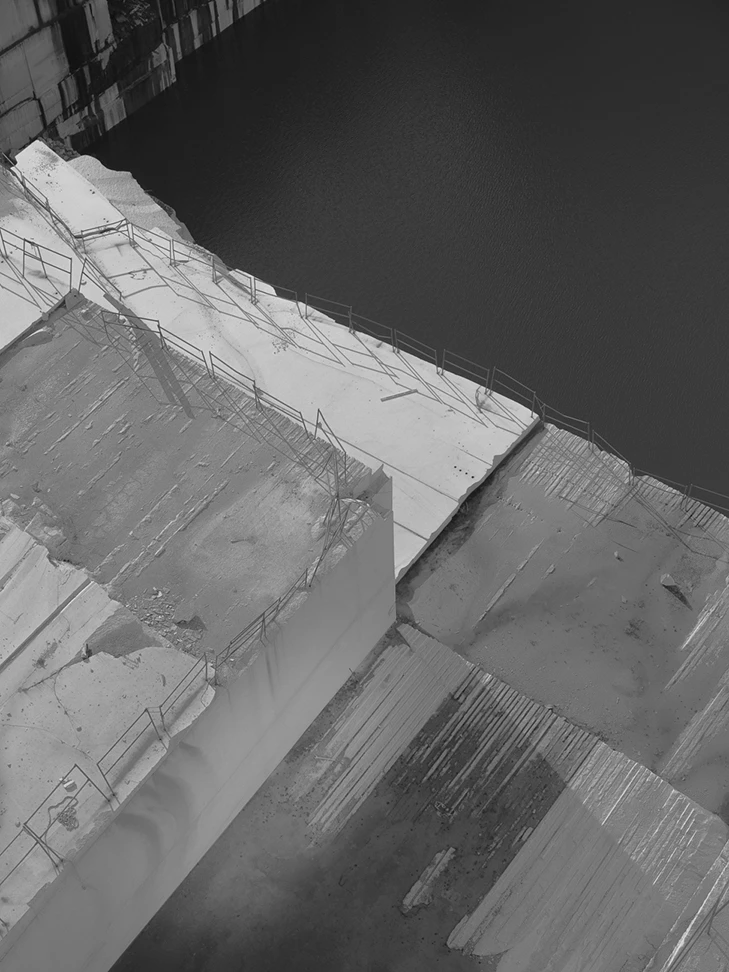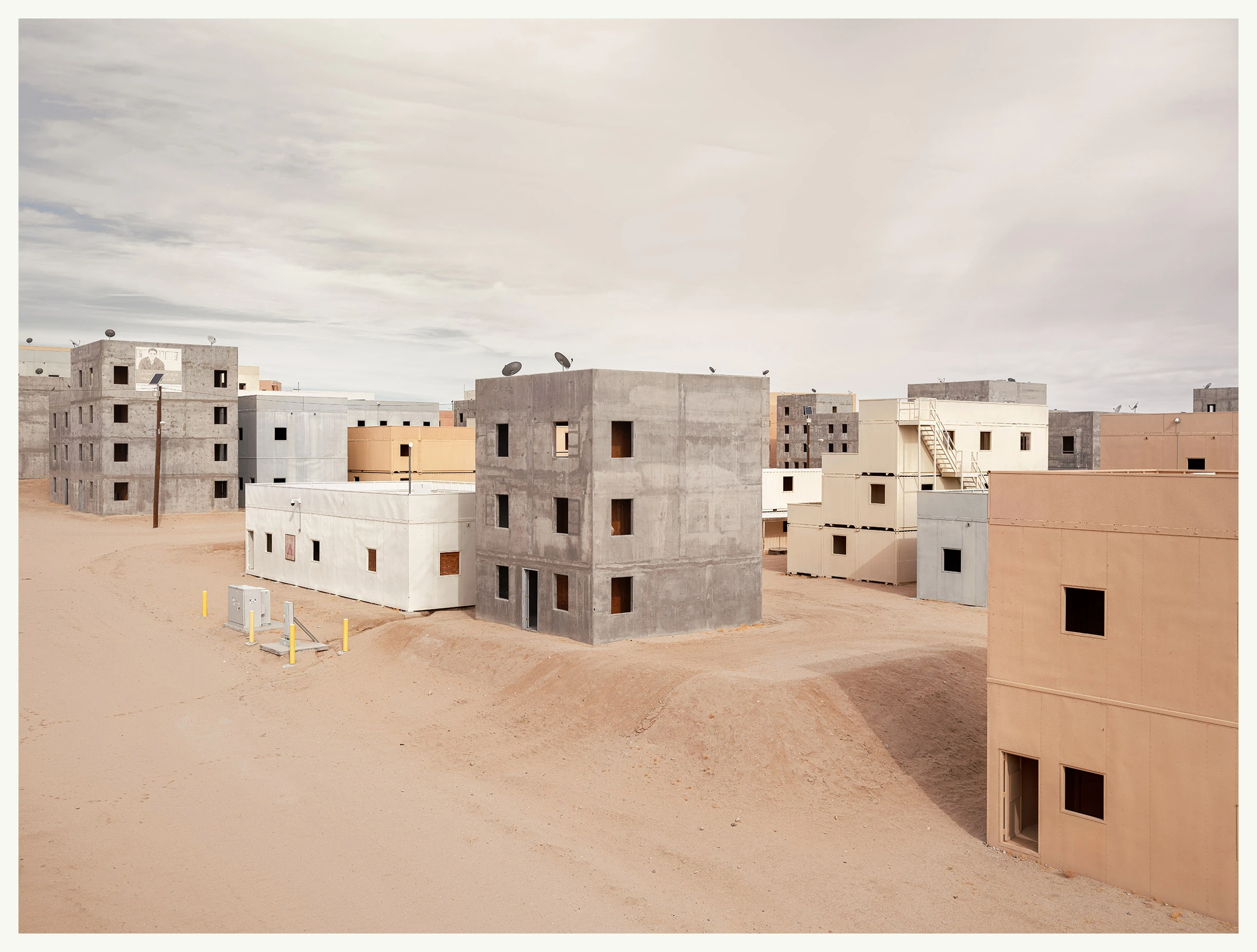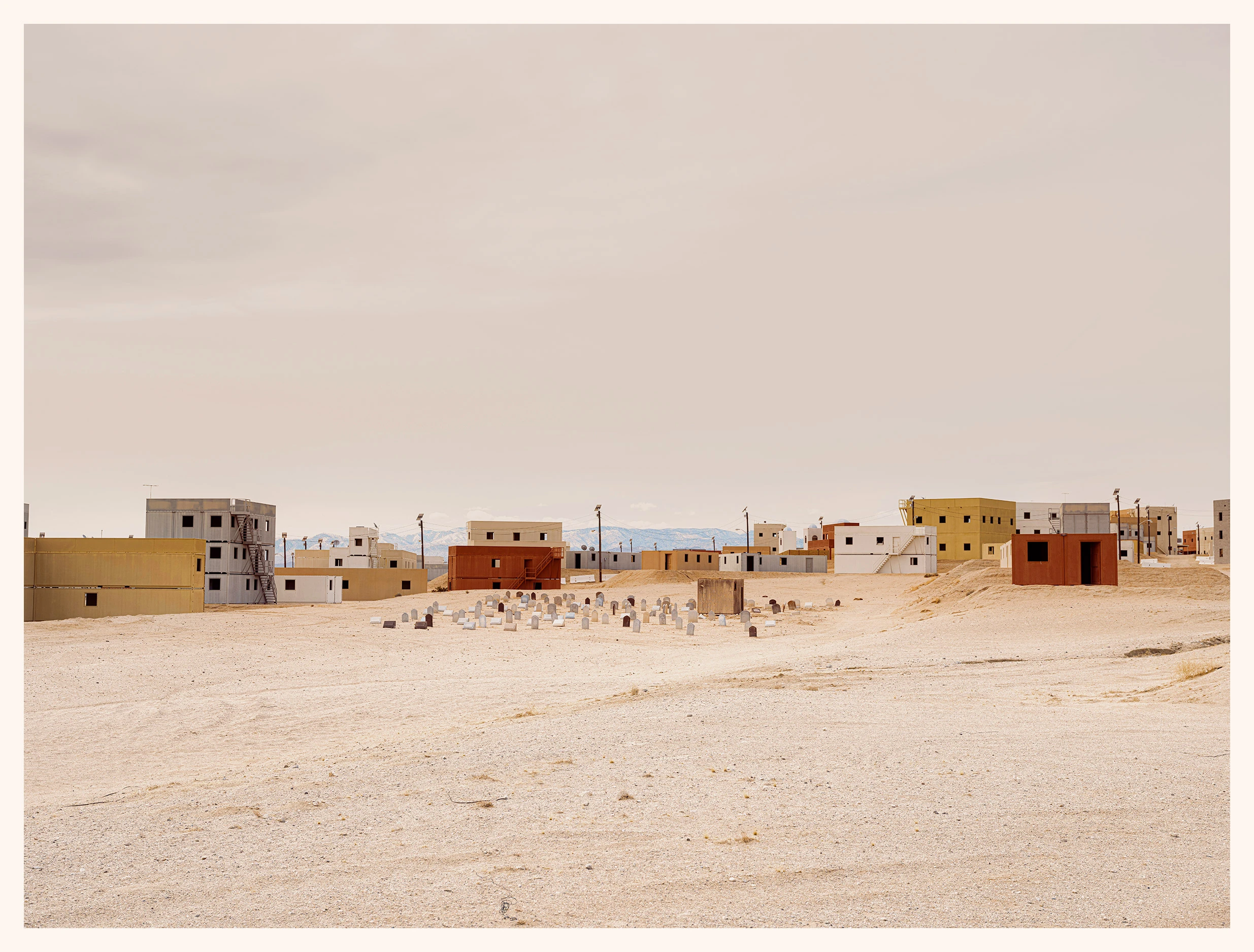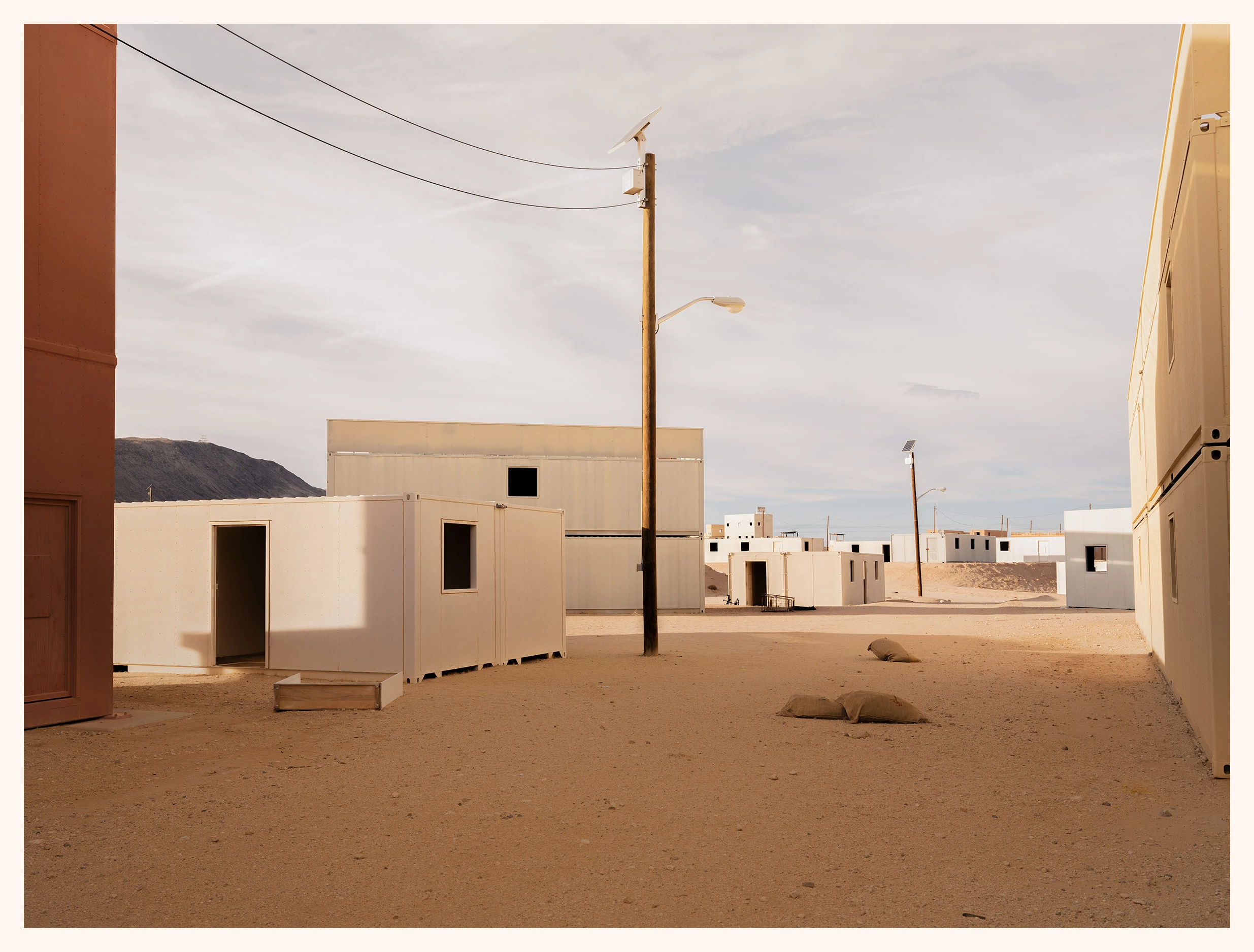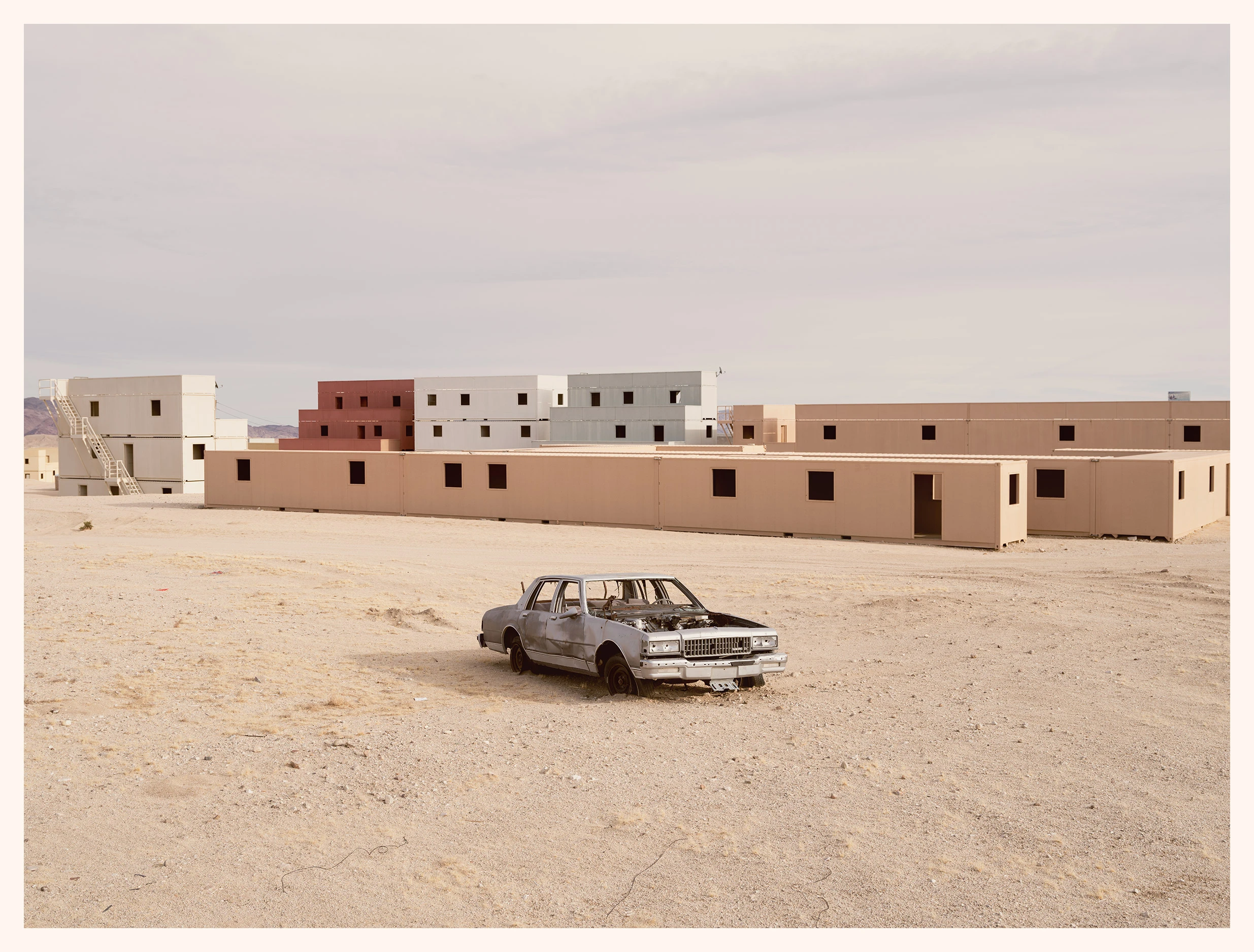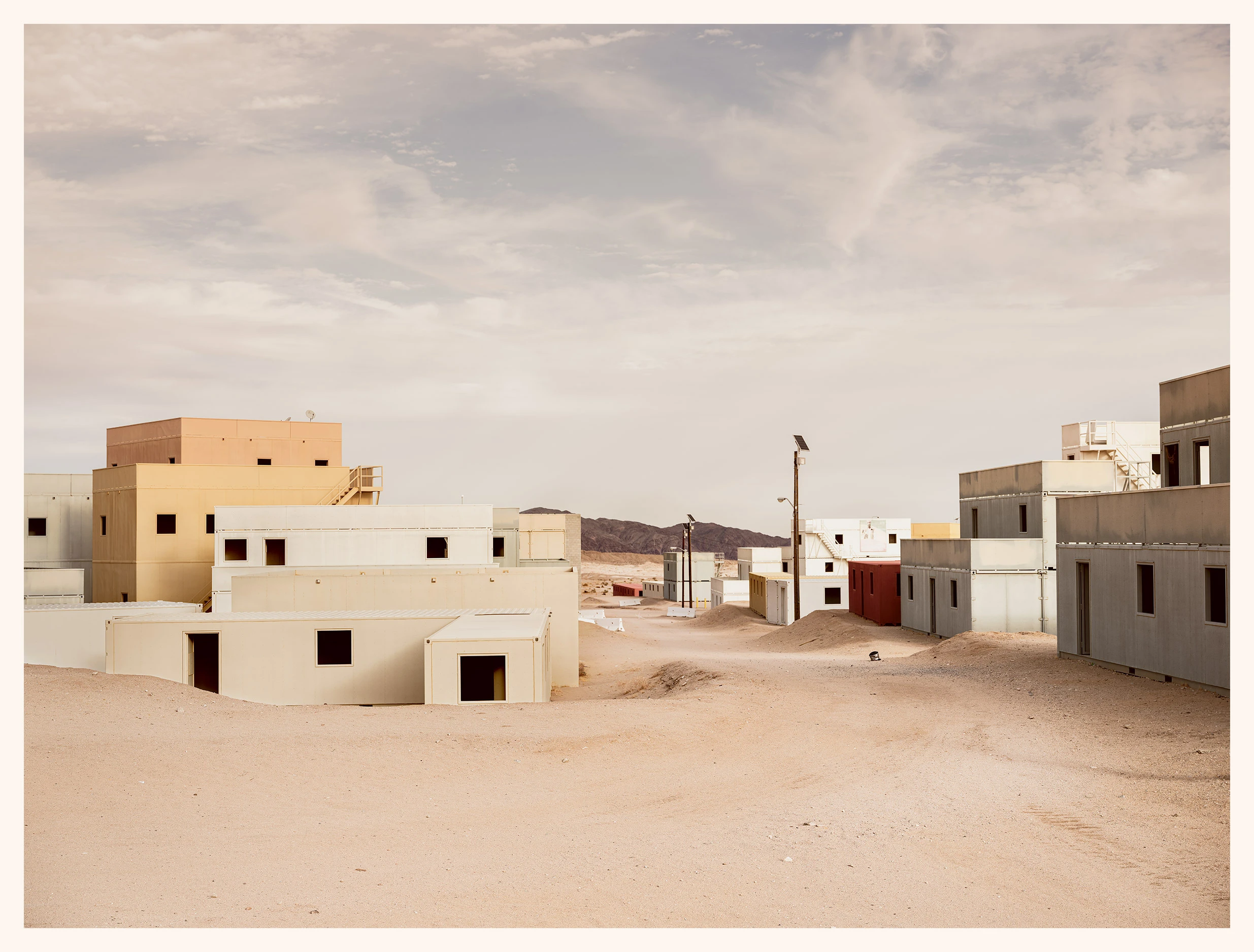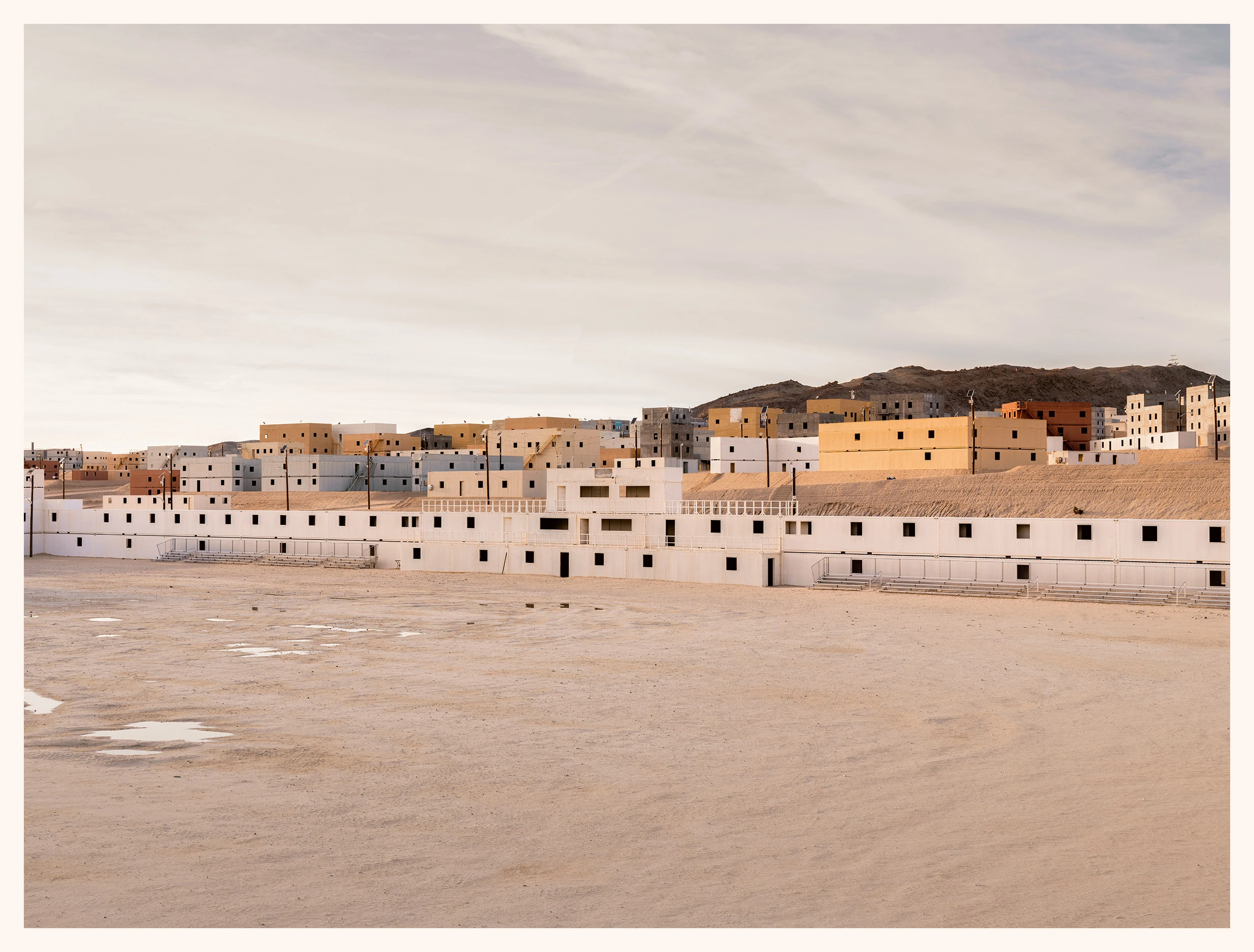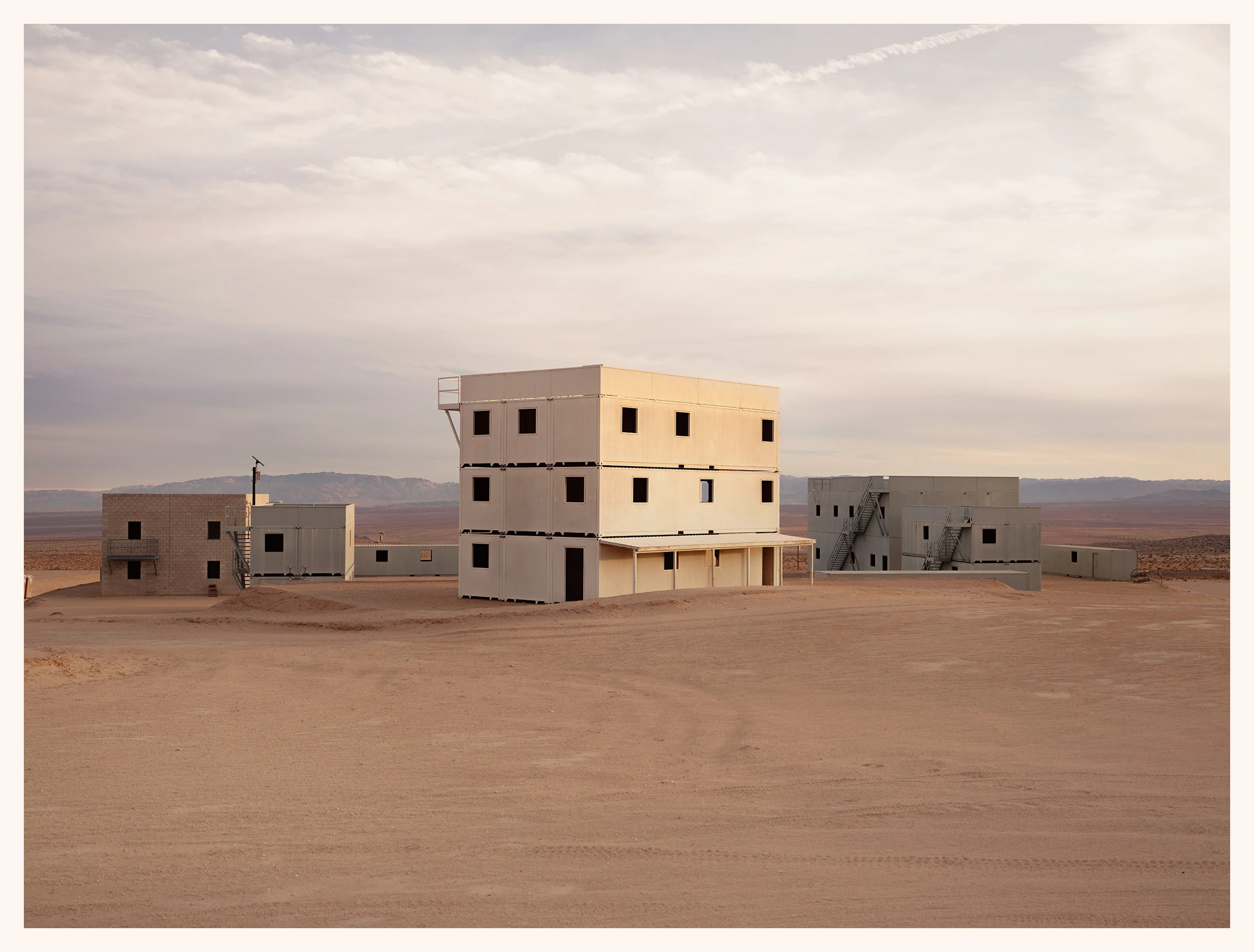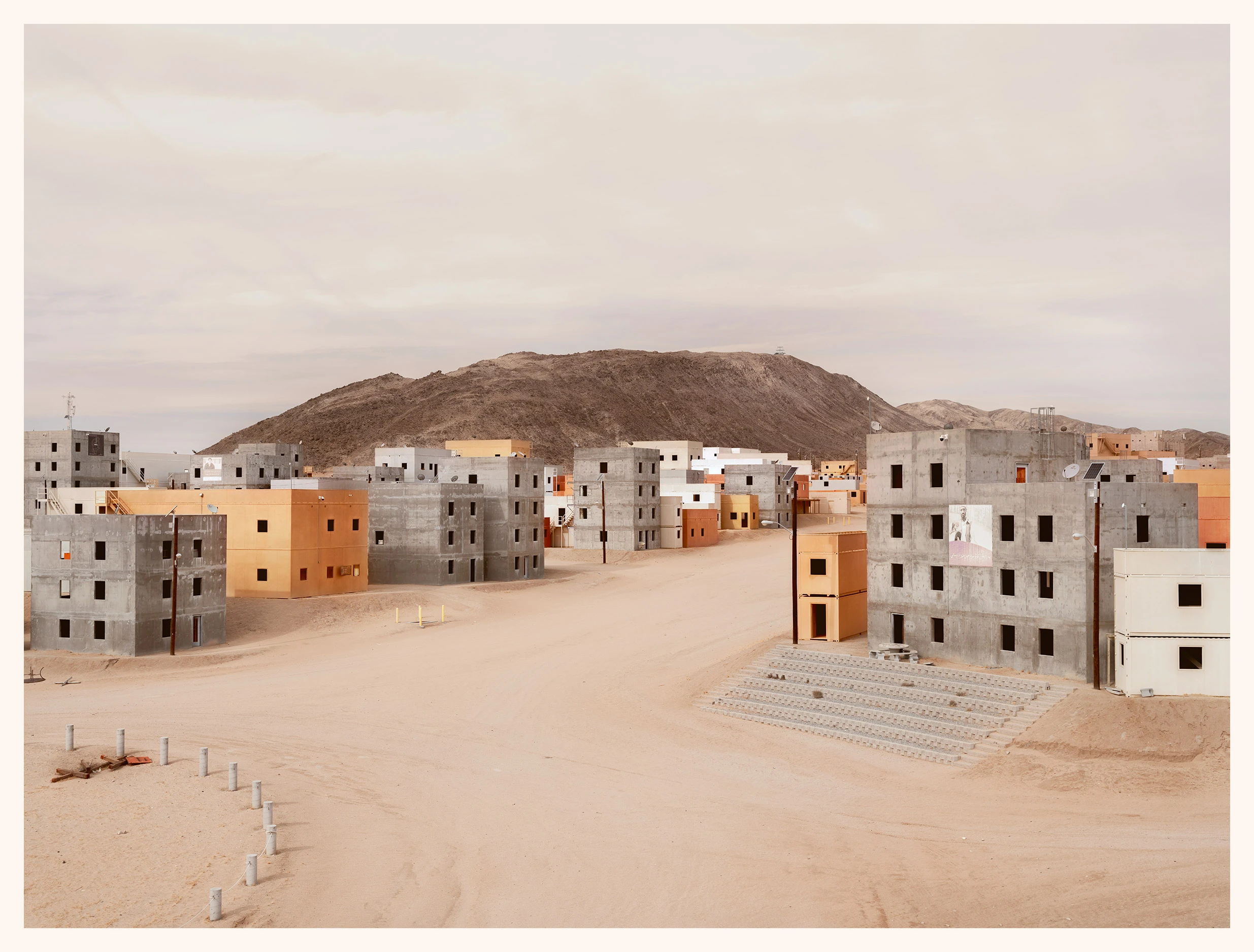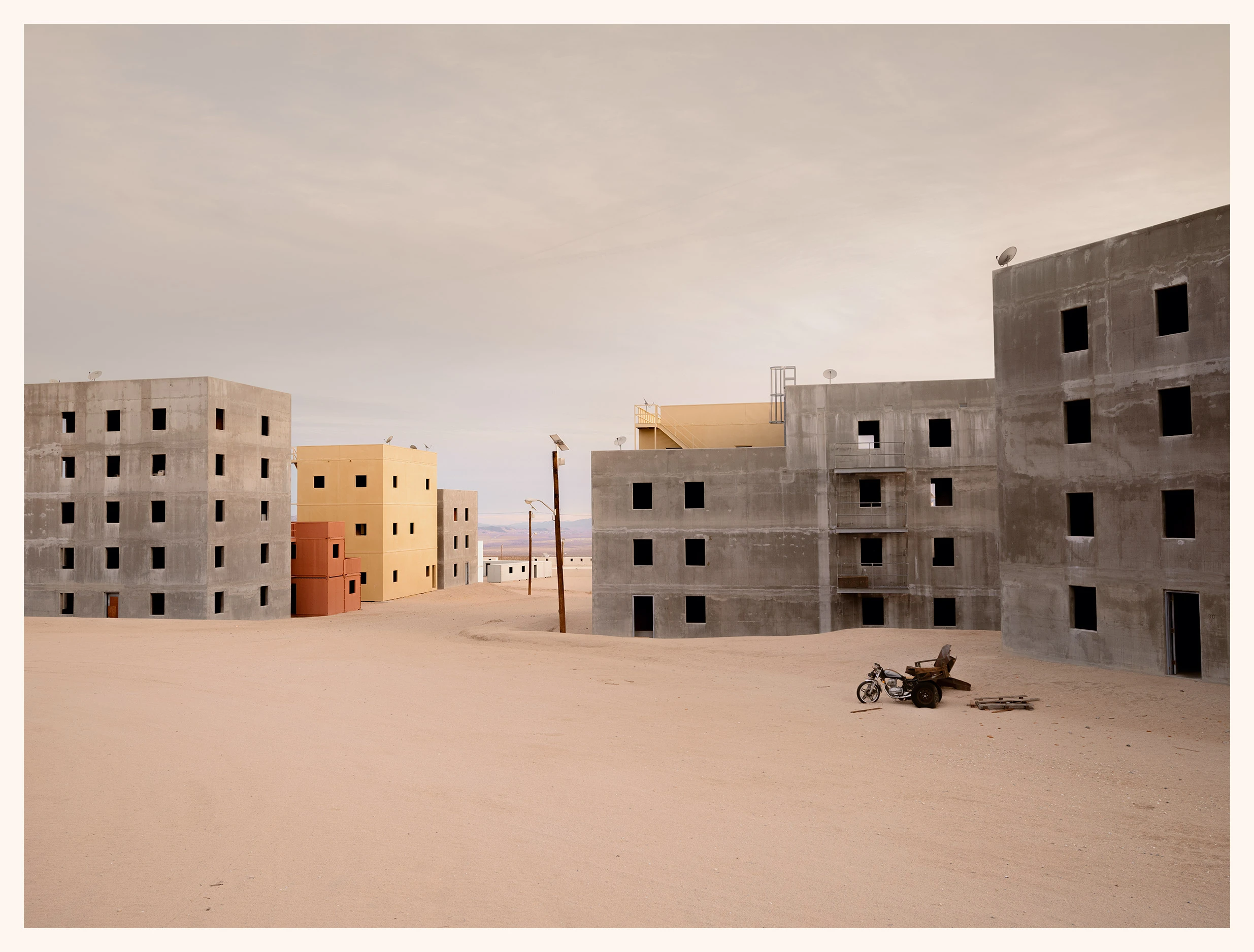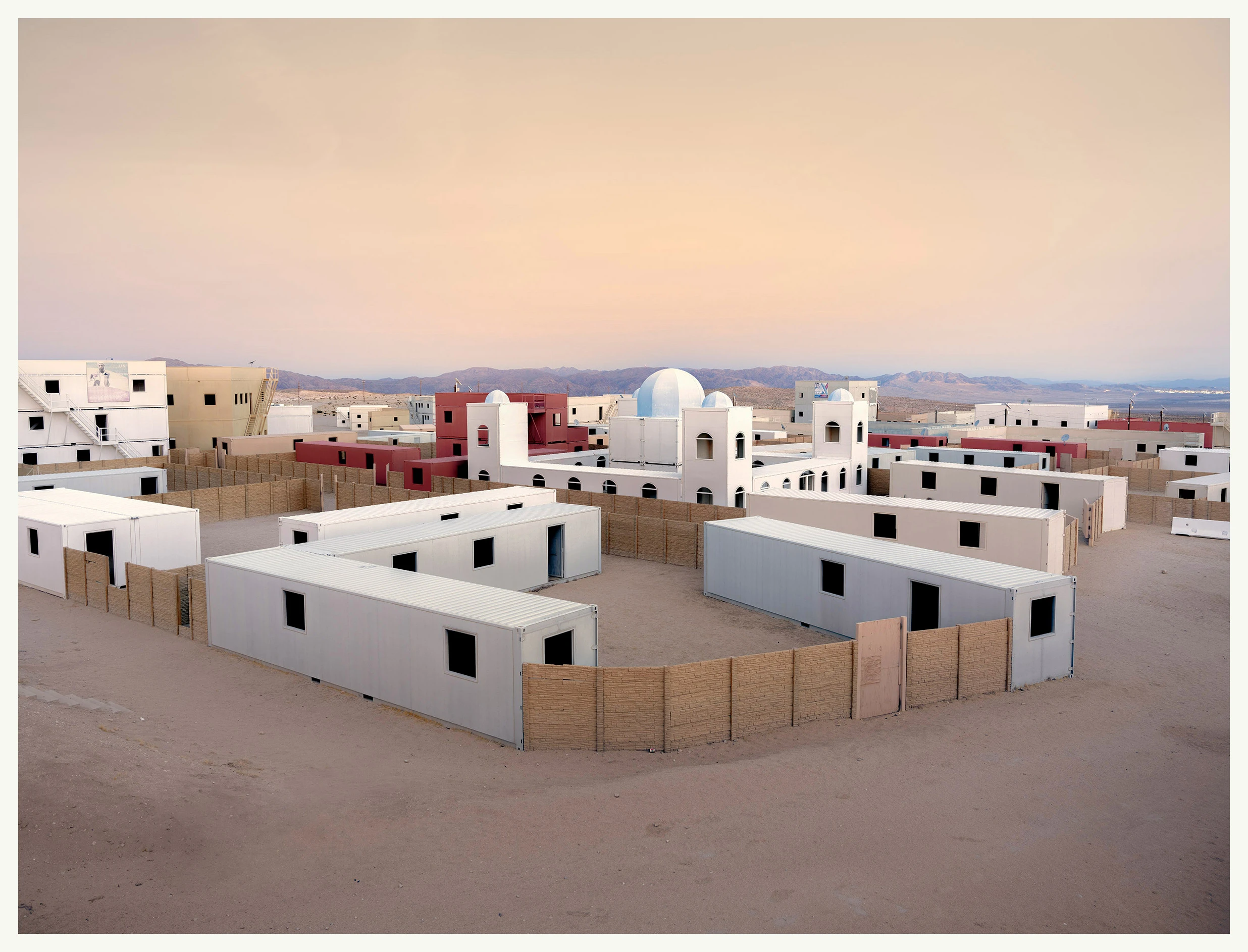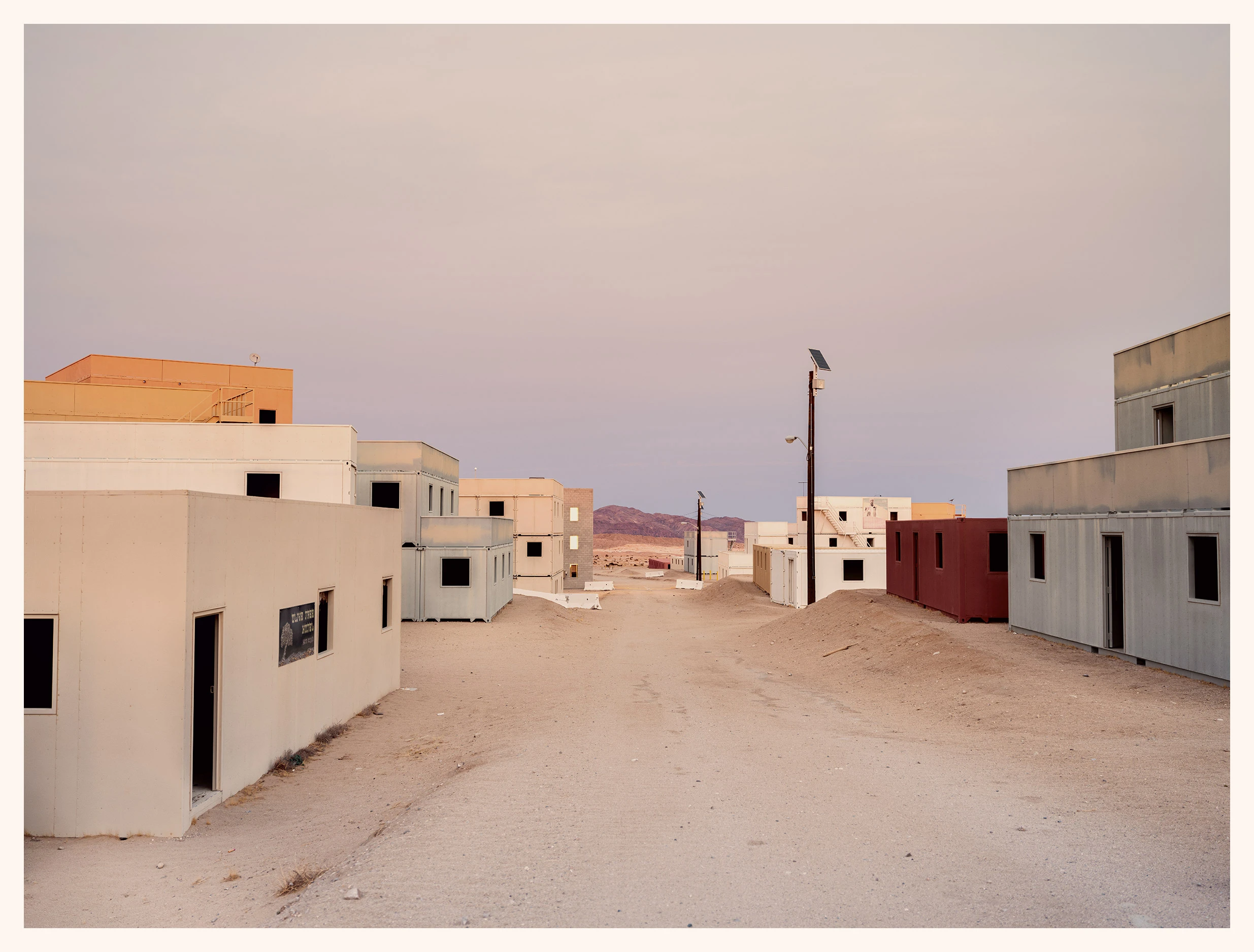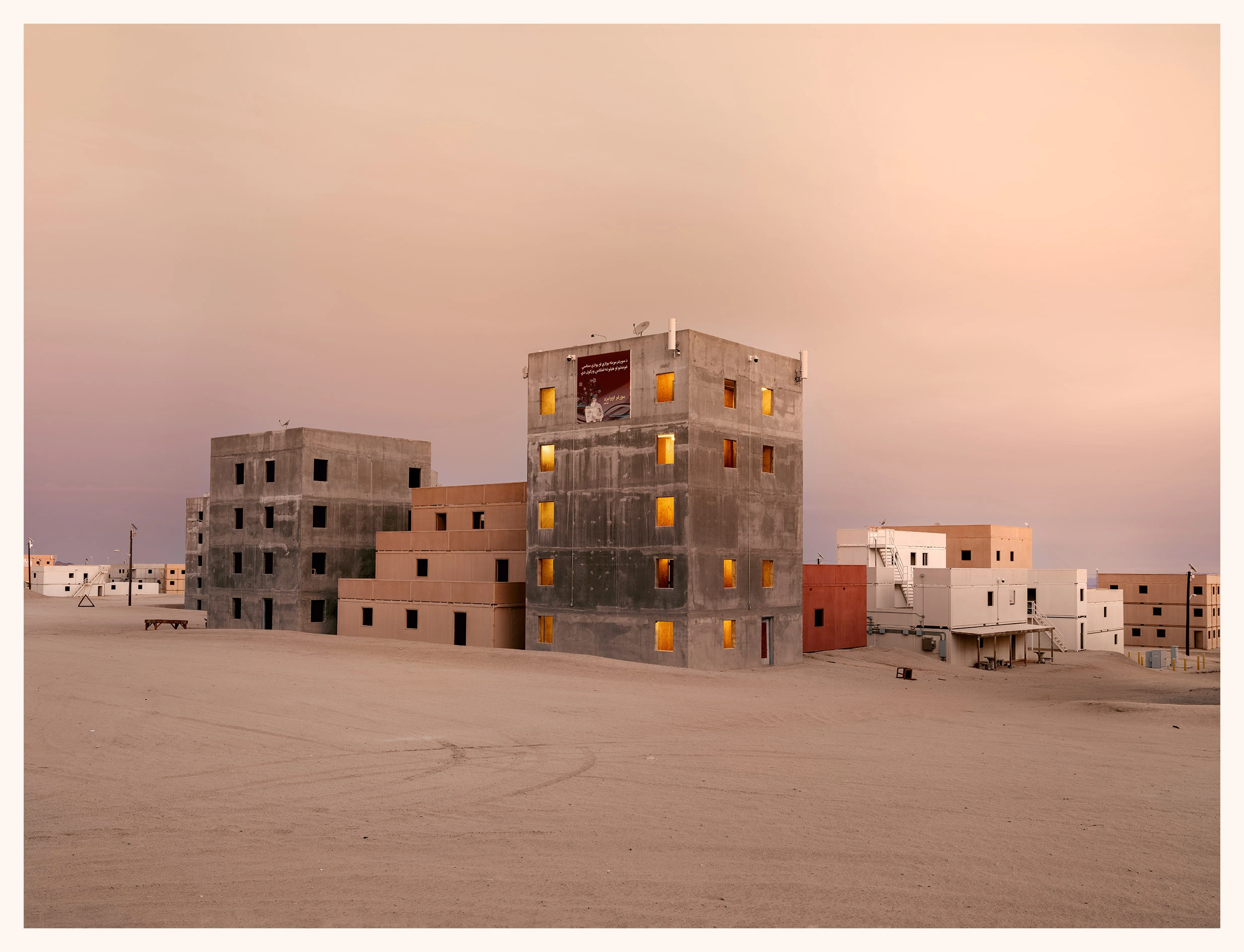Range 220
Range 220 is a place where one can lose it’s self in a practice of combat. A place that resembles nothing completely real nor fictional.
A stage manufactured by the US Government to help train our military. Composed with more than 1500 buildings, a mosque, cemeteries with no context, burned down cars, middle eastern posters and banners on sides of buildings and market stalls with plastic fruits. All of these decorations are attempts to illustrate a broken down middle eastern town and really only leaving a complete impression of falsehood. But this place is far more than bad visual fundamentals. This place is not a real place with any true consequences for your actions. This is merely a massive playground for our military. An ongoing opera with small plays sprinkled over this playing field. Observed from cameras placed all across this stage so the rehearsal is shaped and rehearsed over and over again for that next insurgent in the middle east. The US was one of the first to create urban warfare ficities to train the military for effective combat and now many countries have fallen suit with the help of the United States for their own specific military efforts and future concerns.
Range 220 because it crosses a line of deception. I’m focused on exploring those complexities on what is real and what seems like a fantasy world. This place takes itself very seriously but I don’t see it that way.
Celestrial lands Project







Range 220
Range 220 serves as a captivating training ground where the boundaries between reality and fiction meld. Crafted meticulously by the U.S. Marine Corps in response to the post-9/11 landscape, it was completed in 2011, boasting over 1,500 structures, including a mosque, cemeteries, charred cars, Middle Eastern motifs, and market stalls laden with plastic fruits. These elements combine to construct a simulated Middle Eastern narrative, blurring the lines between authenticity and artifice.
A continuous theater production in this expansive training arena unfolds, akin to duets and arias performed on a dune-covered stage. Cameras are strategically positioned as both observers and directors, orchestrating rehearsals and informing practices for future military operations, notably urban warfare campaigns. The United States' pioneering role in establishing such facilities has catalyzed other nations to follow suit.
The inherent deception within Range 220 prompts me to delve into the intricate interplay between reality and science fiction. Through my art, I explore the complexities of what is genuine and what appears illusory, inviting viewers to ponder the multifaceted nature of this training landscape.
Range 220 is a place where one can lose oneself in a practice of combat. A place that resembles nothing completely real nor fictional. A stage manufactured by the US Government to help train our military. Composed with more than 1500 buildings, a mosque, cemeteries with no context, burned down cars, middle eastern posters and banners on sides of buildings and market stalls with plastic fruits. All of these props and decorations, attempts to illustrate a broken down middle eastern narrative and really only leaving a complete impression of falsehood. But this place is far more than bad visual fundamentals. This place is not a real place with any true consequences for your actions. This is merely a massive playground for our military. An ongoing opera with small plays sprinkled over this sand dune playing field. Observed from cameras placed all across this stage so the rehearsal is shaped and rehearsed over and over again for that next insurgent in the middle east. The US was one of the first to create urban warfare facilities to train the military for effective combat and now many countries have fallen suit with the help of the United States for their own specific military efforts and future concerns.

















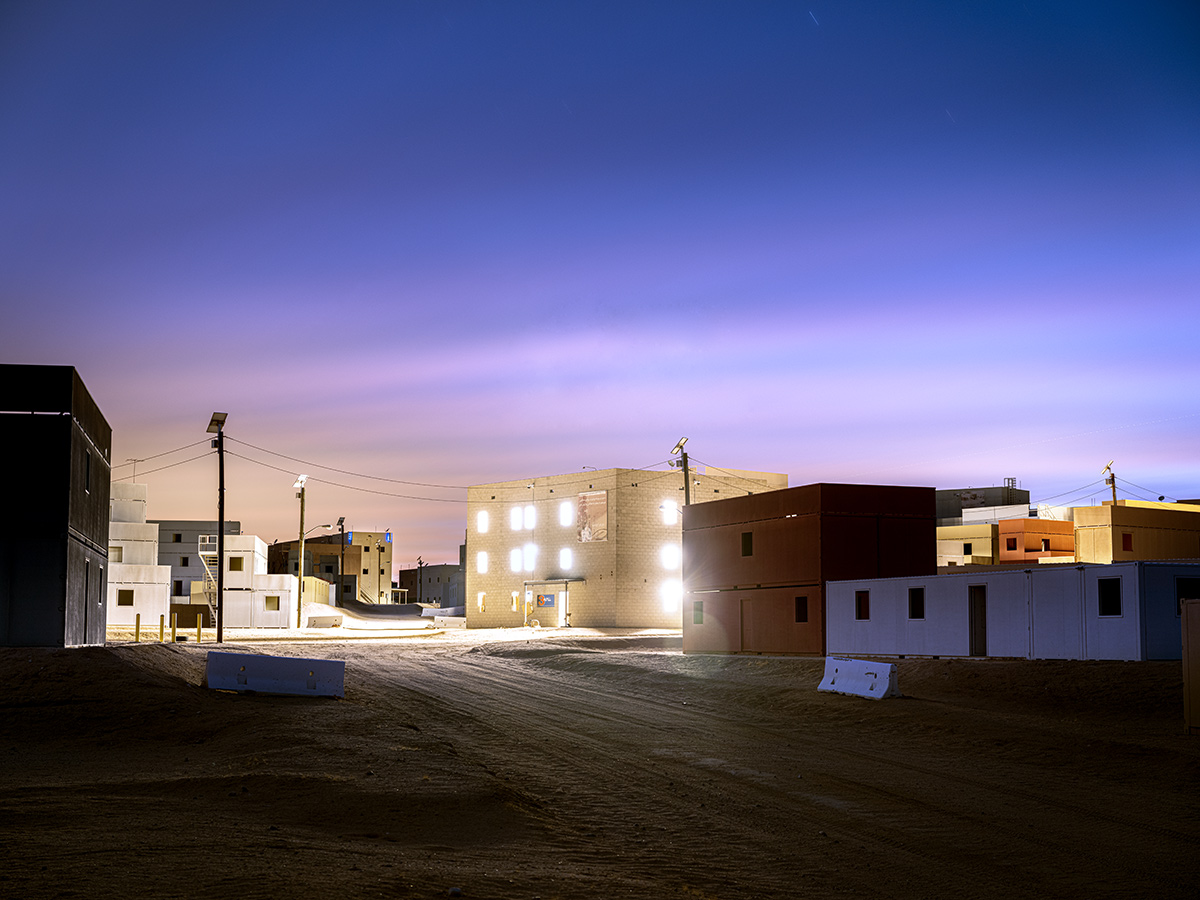
Range 220 serves as a captivating training ground where the boundaries between reality and fiction meld. Crafted meticulously by the U.S. Marine Corps in response to the post-9/11 landscape, it was completed in 2011, boasting over 1,500 structures, including a mosque, cemeteries, charred cars, Middle Eastern motifs, and market stalls laden with plastic fruits. These elements combine to construct a simulated Middle Eastern narrative, blurring the lines between authenticity and artifice.
A continuous theater production in this expansive training arena unfolds, akin to duets and arias performed on a dune-covered stage. Cameras are strategically positioned as both observers and directors, orchestrating rehearsals and informing practices for future military operations, notably urban warfare campaigns. The United States' pioneering role in establishing such facilities has catalyzed other nations to follow suit.
The inherent deception within Range 220 prompts me to delve into the intricate interplay between reality and science fiction. Through my art, I explore the complexities of what is genuine and what appears illusory, inviting viewers to ponder the multifaceted nature of this training landscape.
*images copyright - Noel Spirandelli
Range 220 is a place where one can lose oneself in a practice of combat. A place that resembles nothing completely real nor fictional. A stage manufactured by the US Government to help train our military. Composed with more than 1500 buildings, a mosque, cemeteries with no context, burned down cars, middle eastern posters and banners on sides of buildings and market stalls with plastic fruits. All of these props and decorations, attempts to illustrate a broken down middle eastern narrative and really only leaving a complete impression of falsehood. But this place is far more than bad visual fundamentals. This place is not a real place with any true consequences for your actions. This is merely a massive playground for our military. An ongoing opera with small plays sprinkled over this sand dune playing field. Observed from cameras placed all across this stage so the rehearsal is shaped and rehearsed over and over again for that next insurgent in the middle east. The US was one of the first to create urban warfare facilities to train the military for effective combat and now many countries have fallen suit with the help of the United States for their own specific military efforts and future concerns.



























